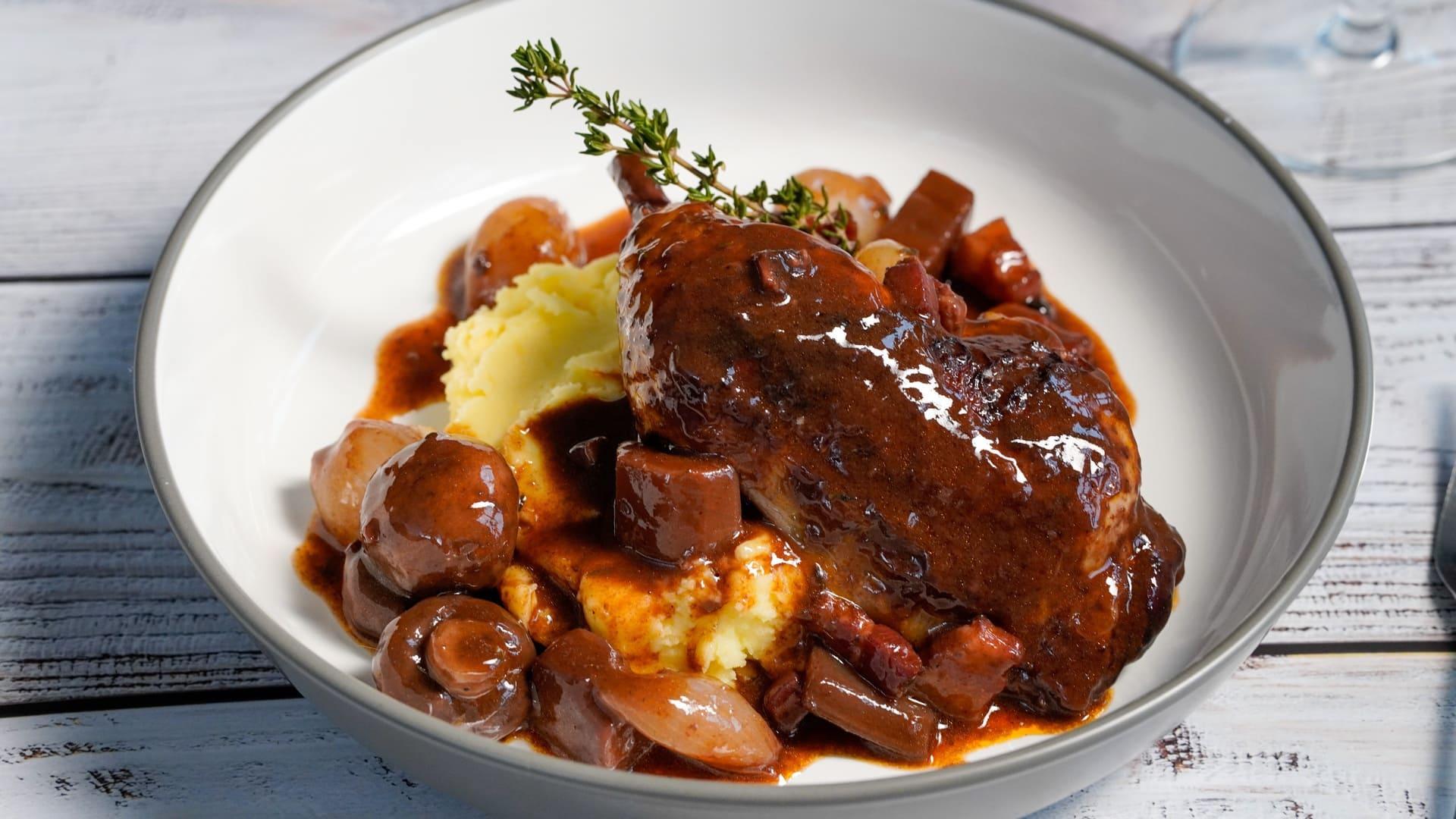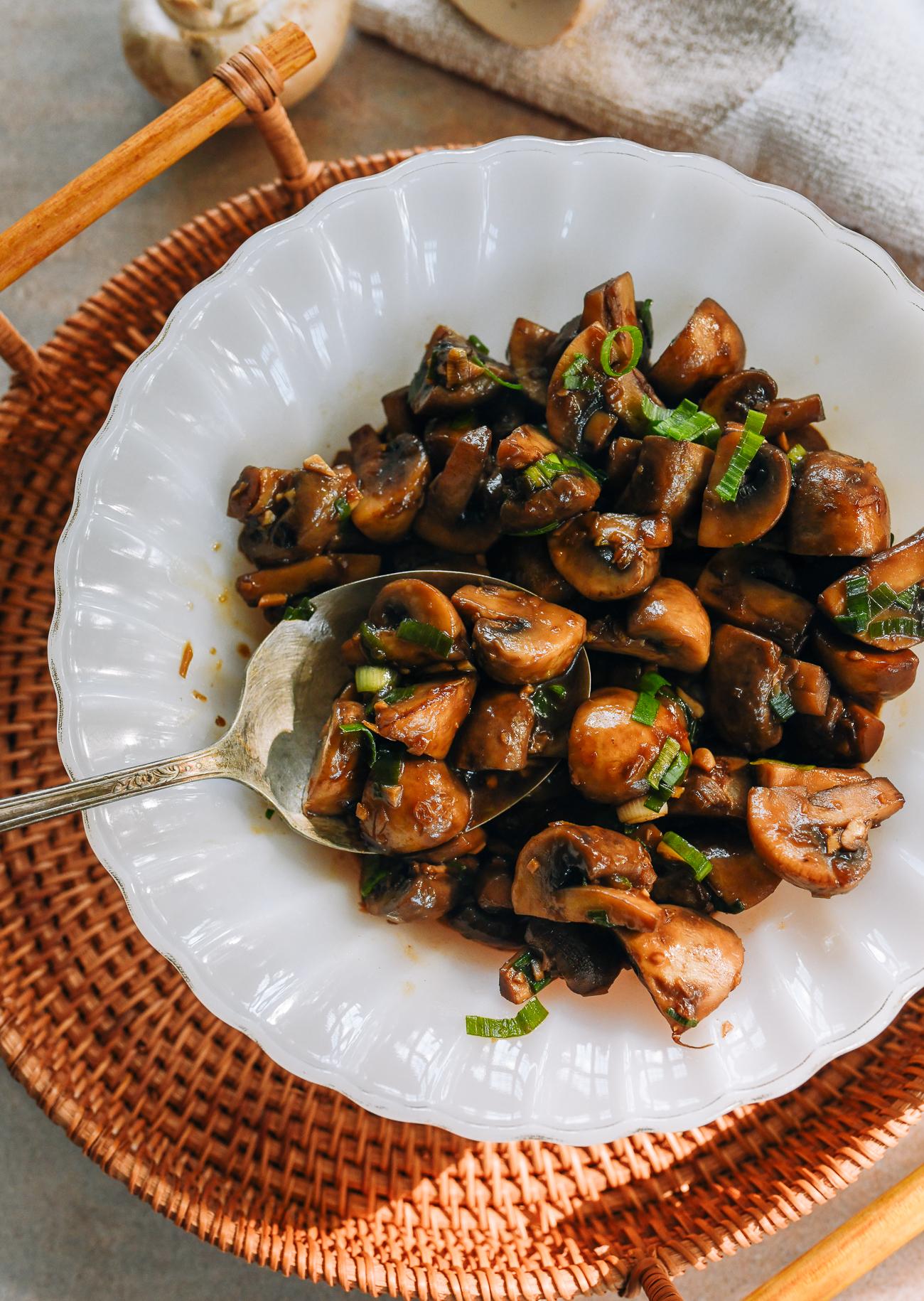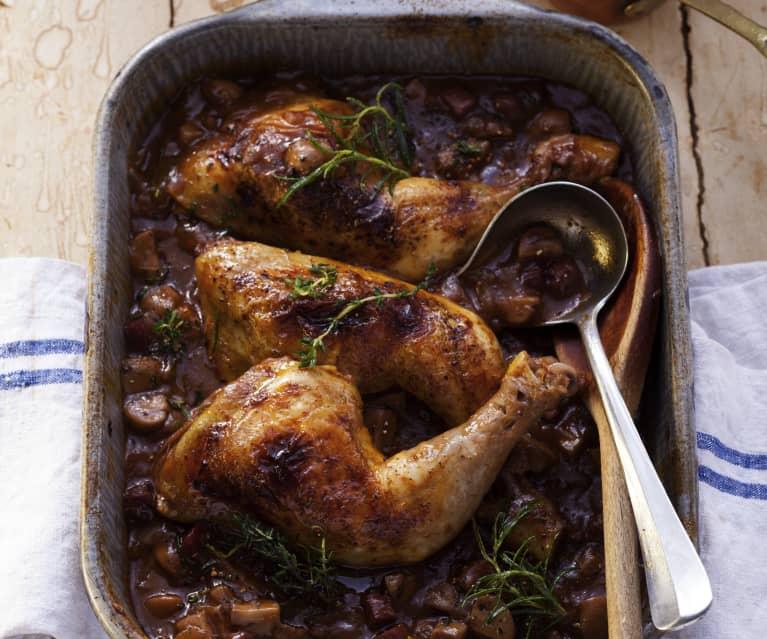Savoring Tradition: Coq au Vin – A French Culinary Classic
nestled within the rich tapestry of French culinary heritage lies a dish that speaks to the heart of rustic elegance: Coq au Vin. This iconic recipe, with its roots tracing back to the heart of rural France, is much more than just a meal; it is indeed a celebration of tradition, showcasing the art of slow cooking and the deep, harmonious flavors that can emerge from humble ingredients. As the fragrance of tender chicken simmering in red wine, mushrooms, and aromatic herbs wafts through the air, one is transported to a time when meals were crafted with care and savored around the family table. In this article, we embark on a flavorful journey that delves into the history, preparation, and cultural significance of Coq au Vin, inviting both seasoned chefs and curious palates to appreciate this savory classic that has stood the test of time.
Exploring the Rich History Behind Coq au Vin
Coq au Vin’s origins can be traced back to ancient Gaul, where regional cooking practices celebrated local ingredients and rustic flavors. This dish, which translates to ”rooster in wine,” reflects the agricultural heritage of France, notably in the Burgundy region where wine production is prominent. Traditionally, the use of rooster—often the most robust poultry available—symbolized a time when farm-to-table practices were essential for communities.The poultry was cooked slowly in red wine, accentuated with aromatic herbs, garlic, and vegetables, allowing the flavors to meld beautifully over hours of simmering. This technique not only tenderized the meat but also transformed simple ingredients into a complex and satisfying dish.
As culinary techniques evolved, so did the adaptations of Coq au Vin. By the mid-20th century, the dish had become a staple in French cooking, often featured in bistros and homes alike. Influences from regional variations emerged, showcasing unique ingredients and preparations, which sparked a creative culinary movement. Classic adaptations include the use of different types of wine, changes in the choice of meat, and even vegetarian or gourmet interpretations. Below is a glimpse into some key elements that define this beloved dish:
| Ingredient | Description |
|---|---|
| Chicken or Rooster | Typically braised to absorb flavors. |
| Red Wine | Enhances the richness of the dish. |
| Mushrooms | Adds earthy depth and umami. |
| Bacon or Lardons | Introduces smokiness and fat. |
| Herbs | Typically thyme and bay leaves for freshness. |

Decoding the Ingredients: Essential Components for Authentic Flavor
In crafting the timeless dish of Coq au Vin, the symphony of ingredients plays a crucial role in achieving that mouthwatering, authentic flavor. At the heart of this recipe lies chicken, preferably a free-range or organic bird, which yields a tender texture and rich flavor. the choice of red wine, traditionally Burgundy, infuses the dish with its robust character. Complementing these are key aromatics like onions, carrots, and garlic, which create a fragrant base, while the addition of mushrooms contributes an earthy depth. a selection of herbs such as thyme and bay leaves further elevates the overall complexity of the dish.
The magic of Coq au Vin also comes from its careful preparation method,which allows the flavors to meld beautifully. The initial step of browning the chicken in a combination of butter and oil not only adds depth but also creates fond—those delicious bits stuck to the bottom of the pan. After deglazing with wine, the dish is slowly simmered to develop that rich, dark sauce. Here’s a simple overview of the essential components:
| ingredient | Role in Dish |
|---|---|
| Chicken | Provides protein and bulk |
| Red Wine | Adds depth and acidity |
| Vegetables | builds aromatics and sweetness |
| Mushrooms | Enhances earthy flavors |
| Herbs | Infuses fragrance and complexity |

Mastering the Cooking Techniques for a Perfectly Braised Dish
To achieve the rich, deep flavors characteristic of a perfectly braised dish like Coq au Vin, mastering several essential cooking techniques is vital. Start by searing the chicken in a Dutch oven, which not only develops a golden-brown crust but also builds the foundation of flavor through the Maillard reaction. Following this, deglaze the pan with a splash of red wine, scraping up any tasty bits stuck to the bottom. This step is crucial, as it adds an additional layer of complexity to the dish. A good braise also requires the right balance of temperature and time; cook slowly at a low temperature to allow the flavors to meld and the meat to tenderize beautifully.
As you layer in flavors, consider incorporating seasonal vegetables and aromatics that complement the main ingredients. Here’s a speedy reference table for some ideal additions:
| Ingredient | Flavor Contribution |
|---|---|
| Carrots | Natural sweetness and earthy notes |
| Mushrooms | Umami richness |
| Onions | Sweetness and depth |
| Garlic | Fragrant and pungent essence |
Don’t forget the herbs! Fresh thyme and bay leaves work wonders in infusing your braise with aromatic brightness. Once all ingredients are combined, cover and let the magic happen.The long,slow cooking process transforms each element,creating a sumptuous dish that embodies tradition and comfort. Remember to check on your Coq au Vin occasionally, ensuring it’s not too dry; a splash of broth can go a long way in preserving moisture.

Pairing Wine and Side Dishes to Elevate Your Coq au Vin Experience
To truly enhance the rich, savory notes of coq au vin, pairing it with the right side dishes can make all the difference. Consider serving your dish alongside classic accompaniments such as:
- Garlic Mashed Potatoes: Creamy and buttery, these mashed potatoes soak up the delectable sauce.
- ratatouille: A colorful medley of vegetables that adds freshness and a hint of sweetness.
- Haricots Verts: Lightly sautéed green beans dressed with lemon and garlic for a zesty balance.
- Crusty Baguette: Perfect for scooping up every last drop of the sauce, bringing traditional French cuisine to your table.
When it comes to wine, the right selection can elevate the entire meal. A full-bodied Burgundy complements the dish’s earthy undertones, while a Pinot Noir echoes the wine often used in the recipe, tying together flavors beautifully. For those preferring white wine, an oaked Chardonnay can provide a lovely contrast with its creaminess. Below is a quick reference table for suggested wine pairings:
| Wine Type | flavor Profile | Why it Pairs Well |
|---|---|---|
| Burgundy | Rich, complex | Enhances earthy flavors |
| Pinot Noir | Fruity, light | Mirrors the dish’s sauce |
| Oaked Chardonnay | Creamy, buttery | Offers a refreshing contrast |
In Retrospect
As we linger in the warm embrace of Coq au Vin, we find ourselves intertwined not only with flavors but also with time-honored traditions that elevate this dish beyond mere sustenance.Each ingredient,each preparation technique,tells a story of a culture that values patience and passion—a reminder that some of the most delectable experiences are crafted through a thoughtful,deliberate process.
weather you find solace in a rustic kitchen or the lively chatter of a bustling bistro,Coq au Vin invites you to slow down and savor the journey of creation. it encourages us to embrace our culinary heritage while allowing it to evolve and thrive in our kitchens today. So, the next time you sit down to enjoy this timeless classic, take a moment to appreciate the history on your plate and the countless hands that have shared in its making. Through every bite, may you celebrate not just the rich flavors, but also the enduring spirit of tradition that continues to bring us together, one dish at a time. bon appétit!